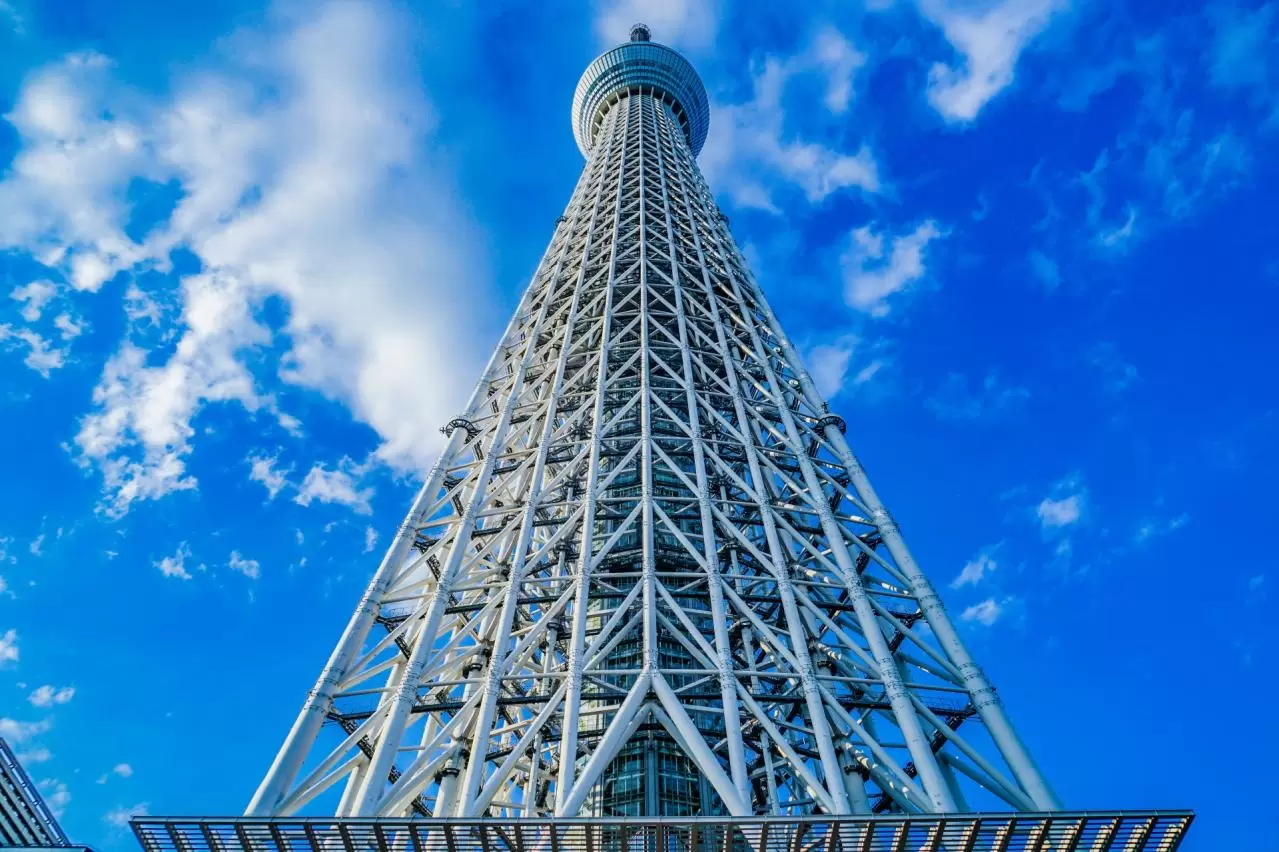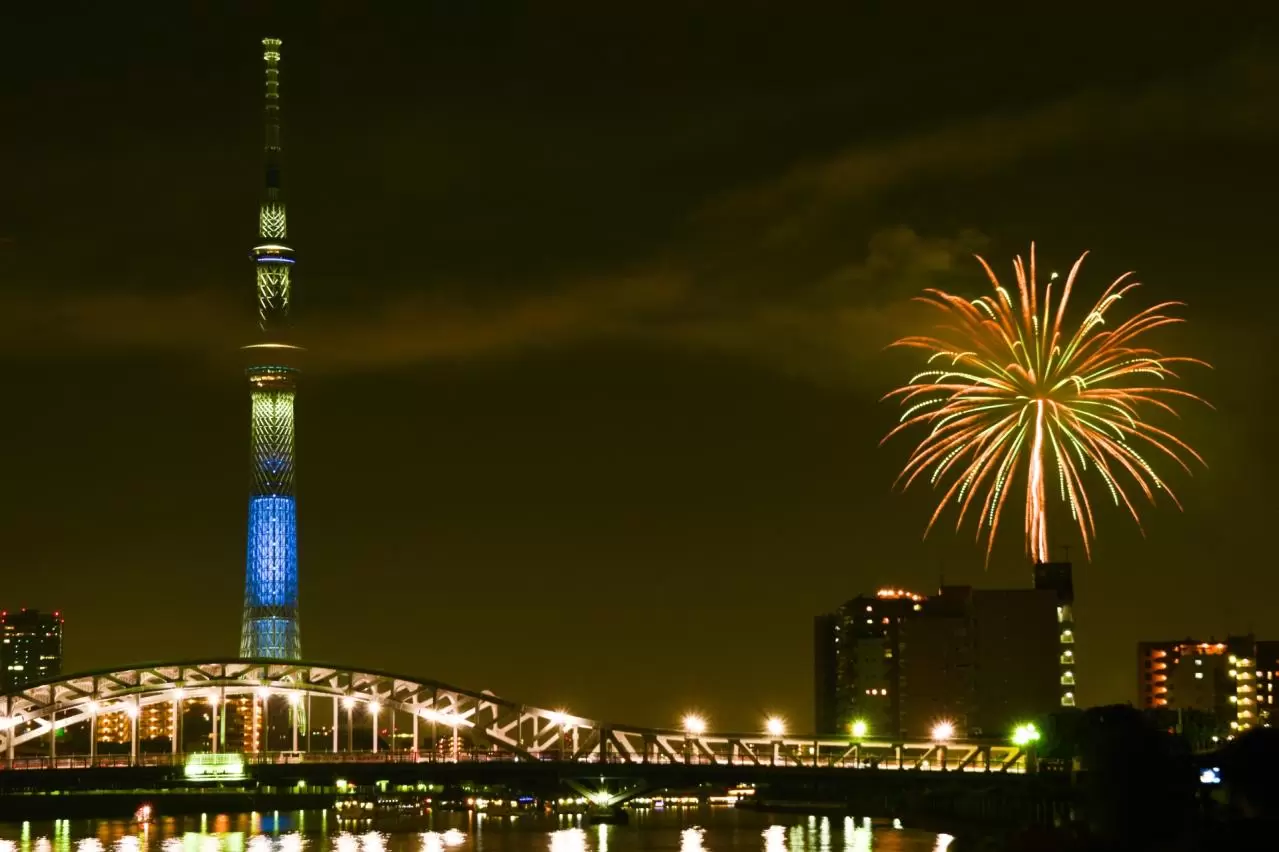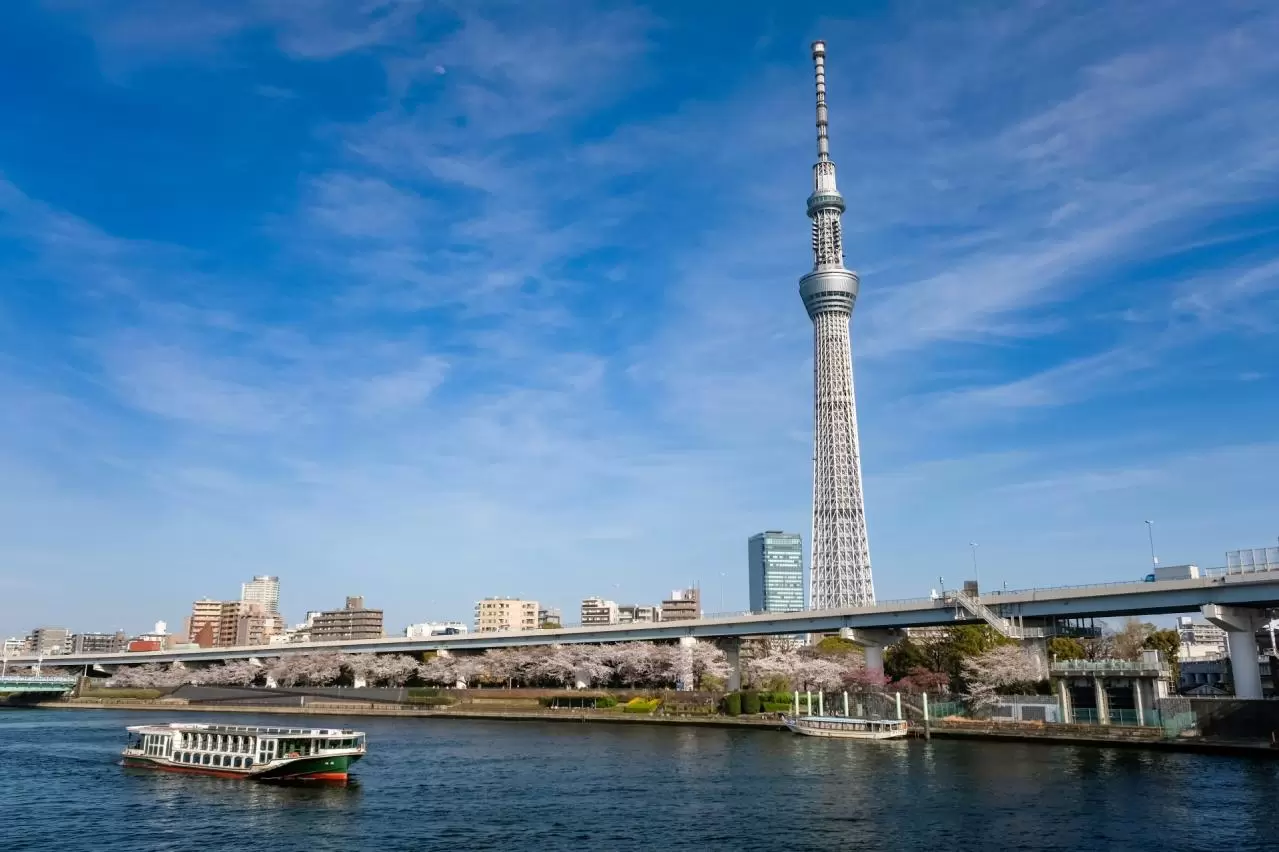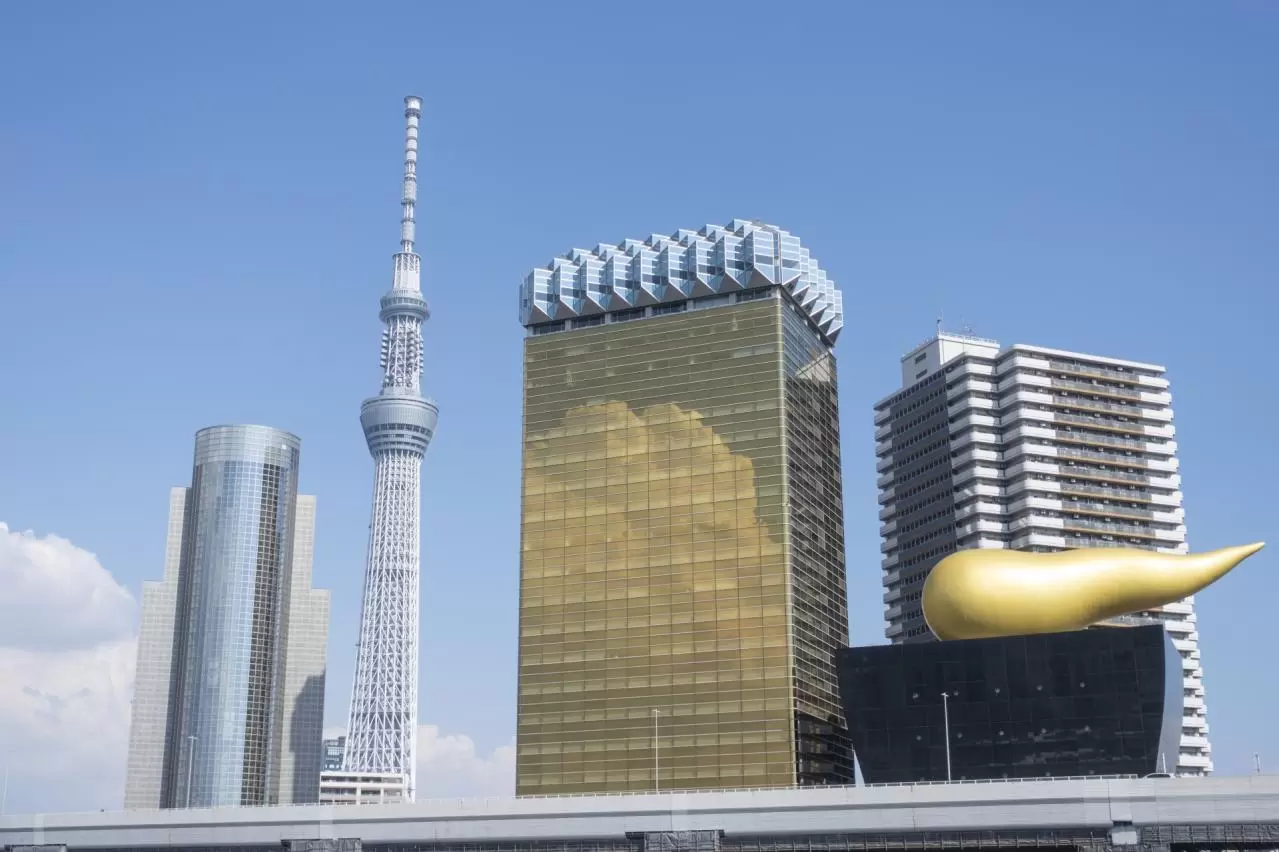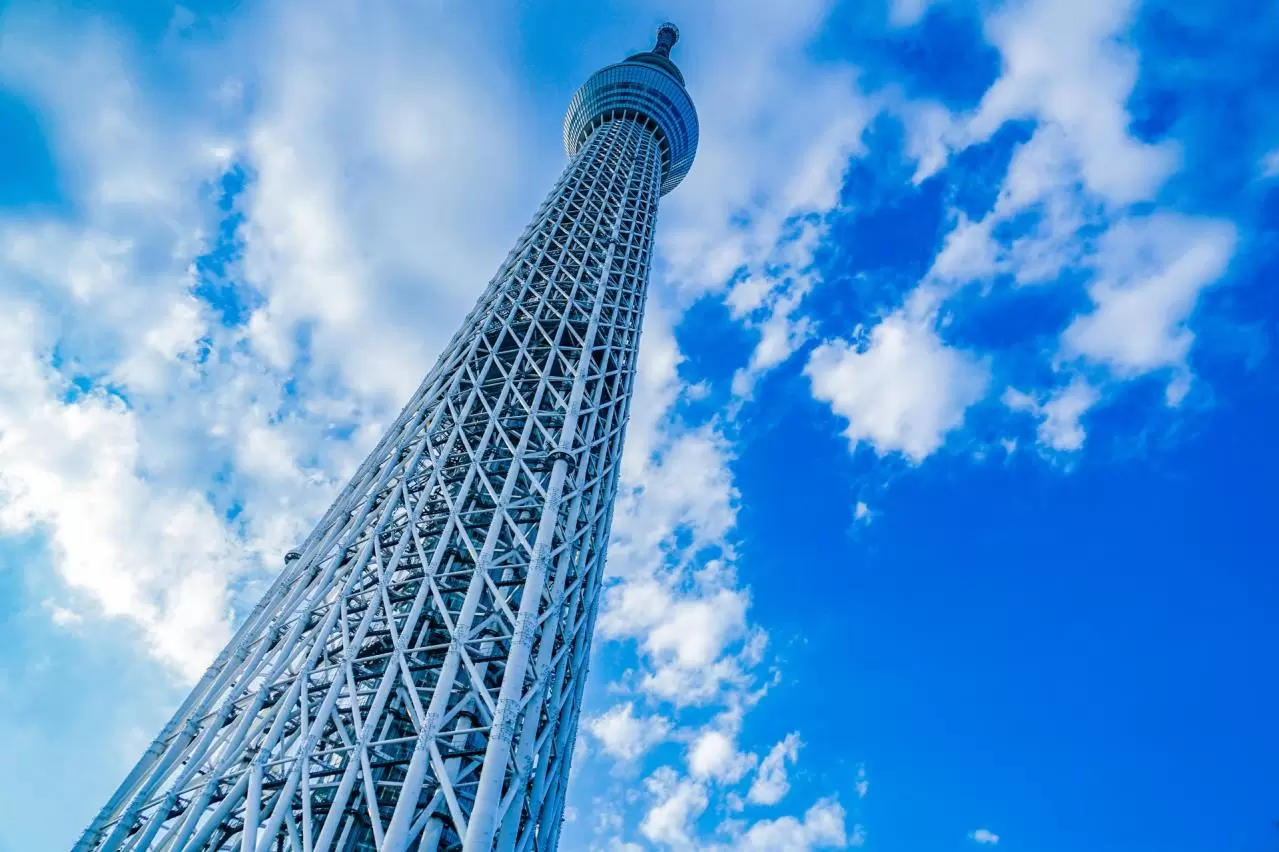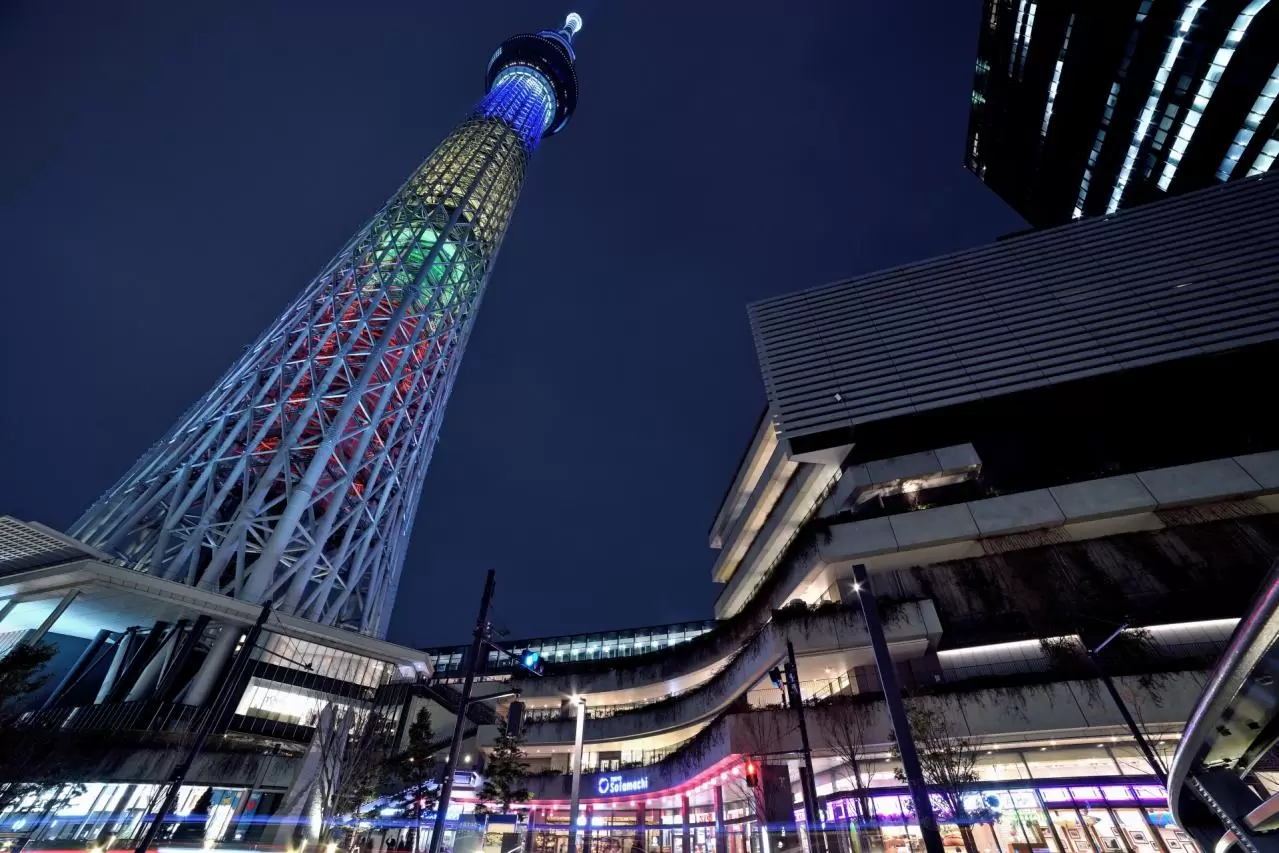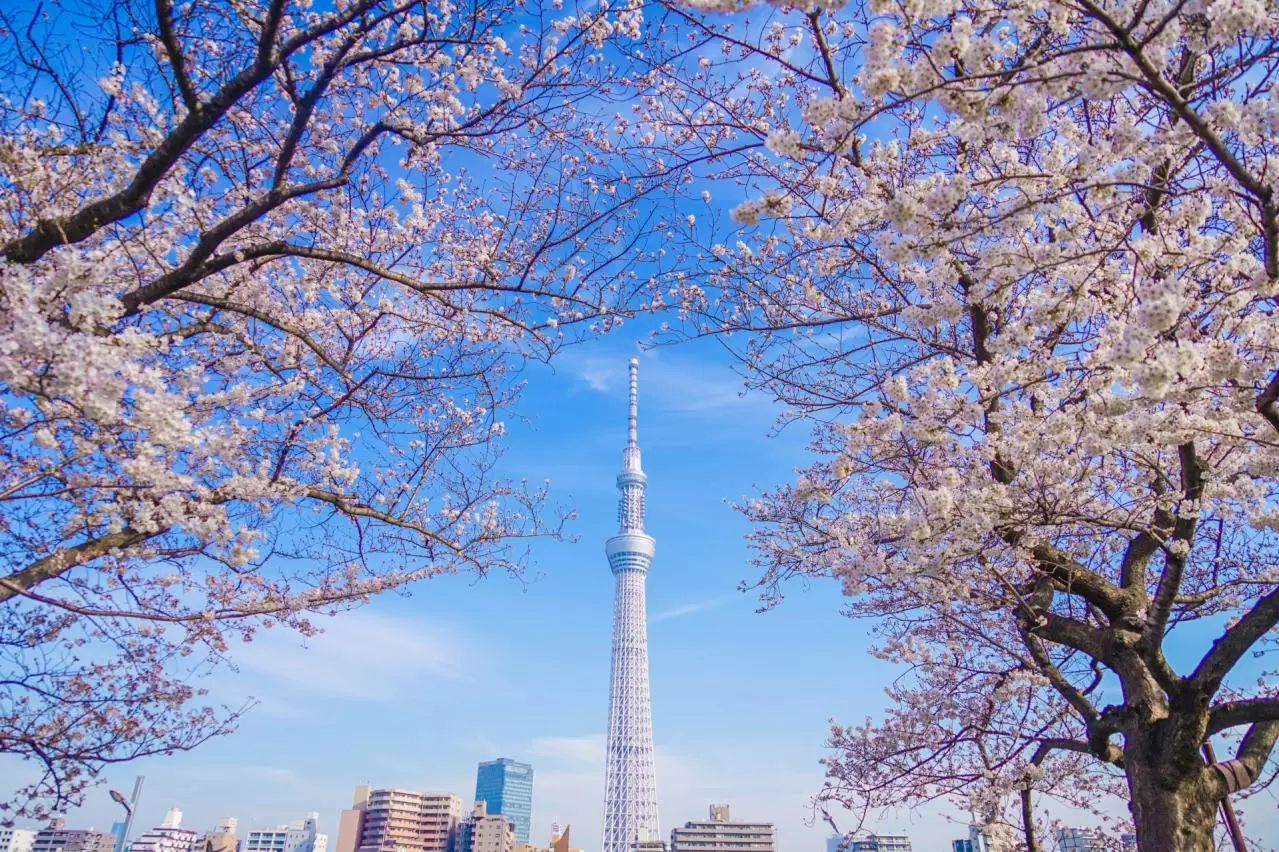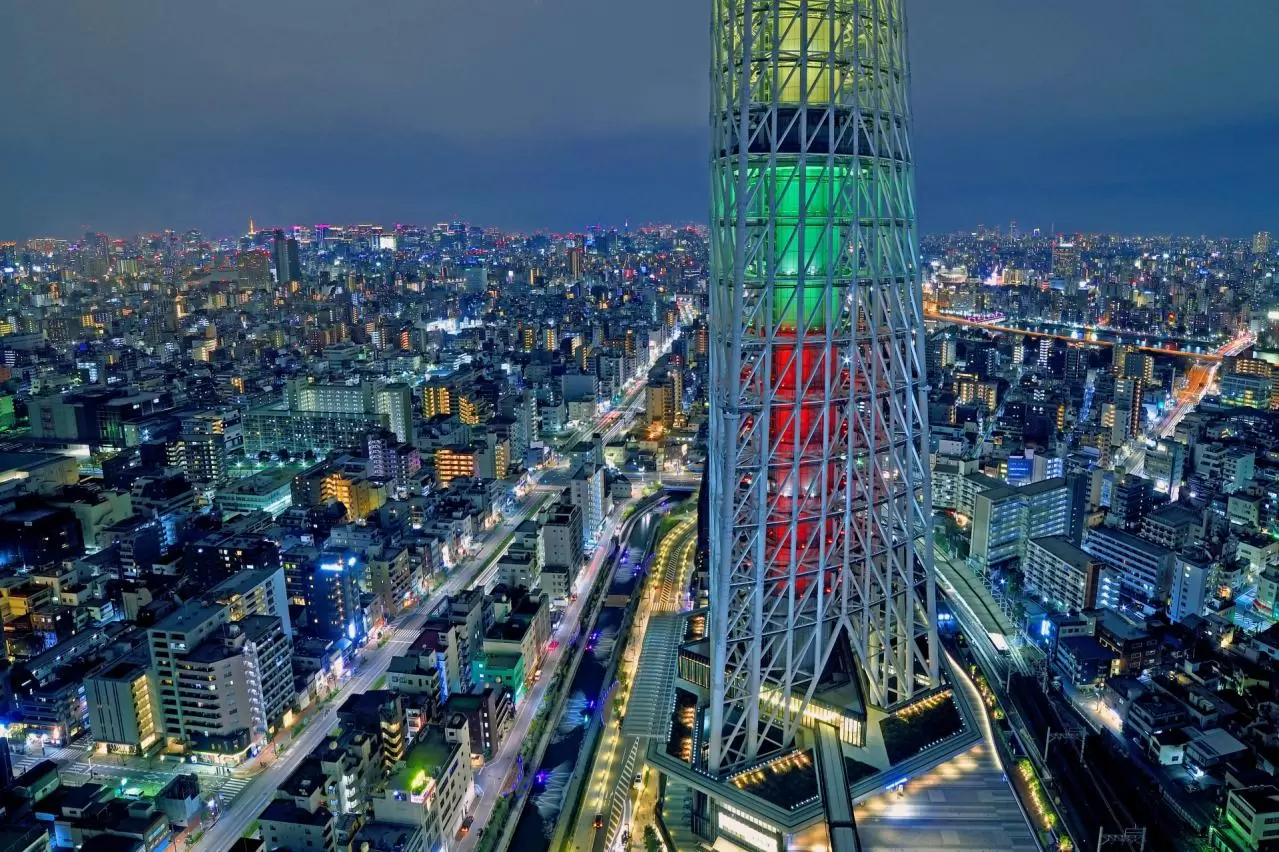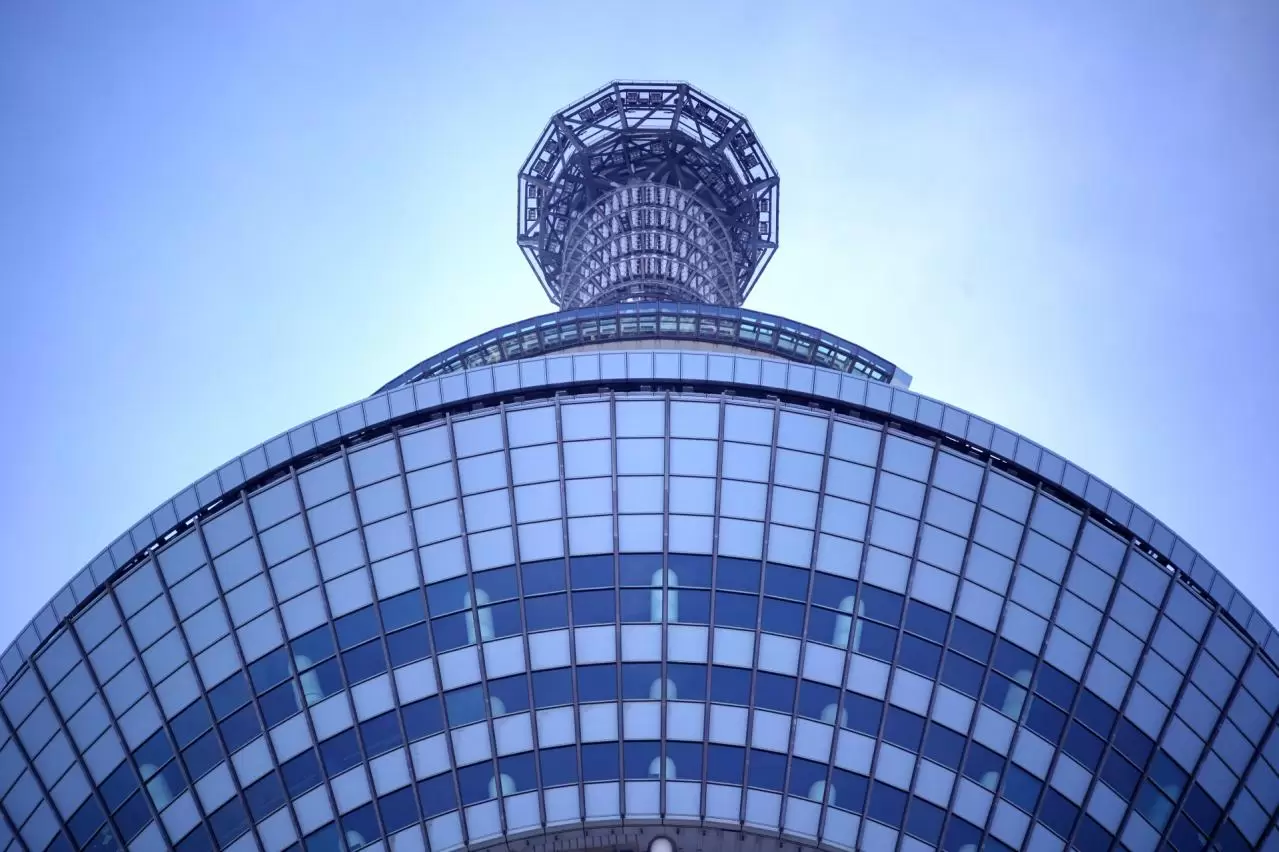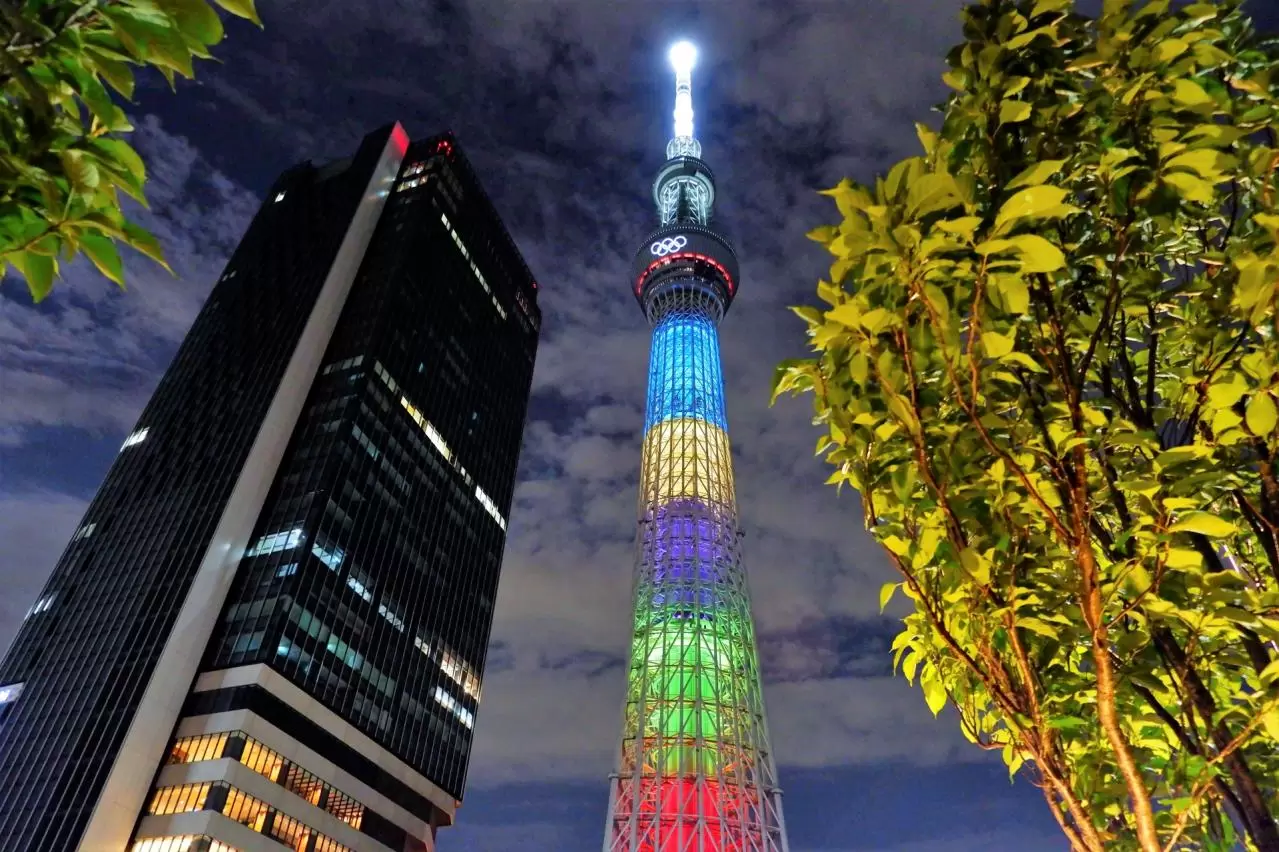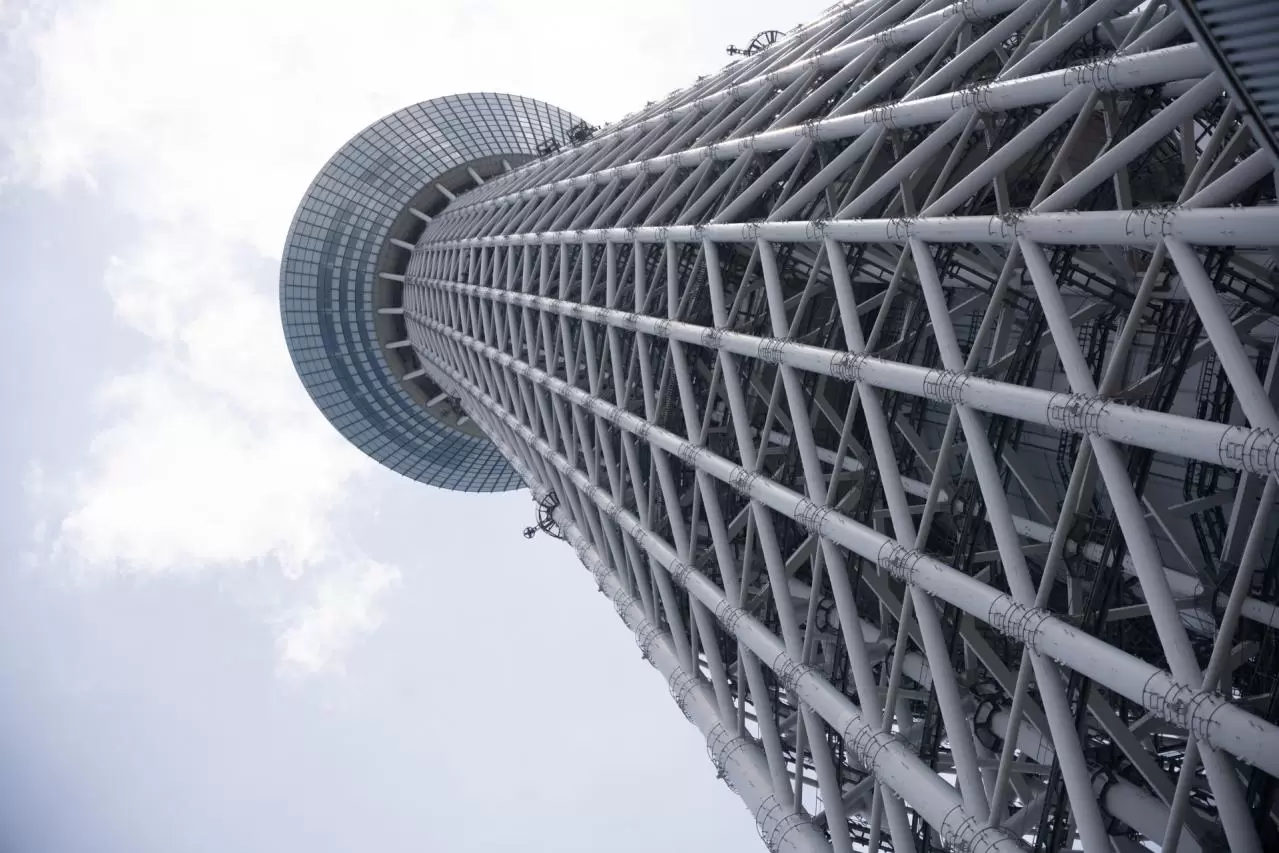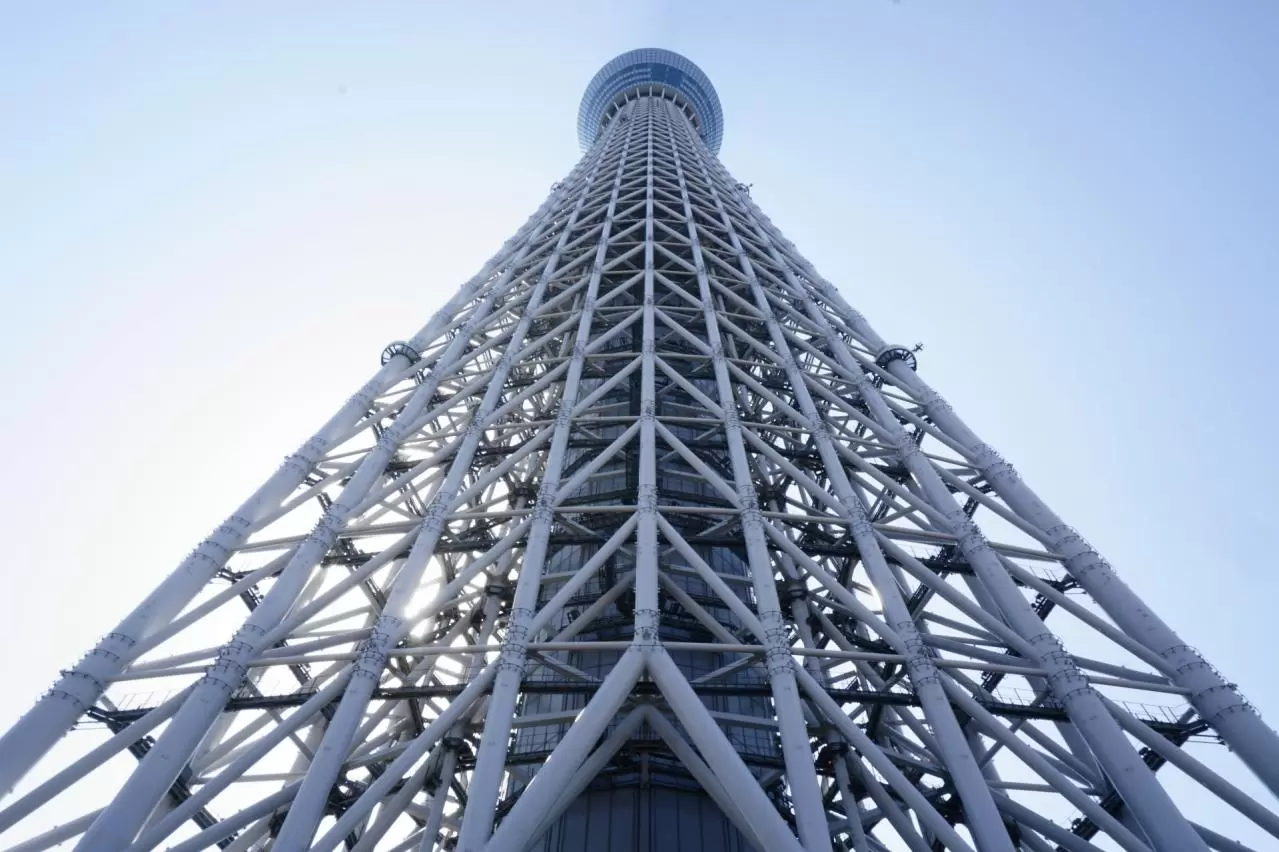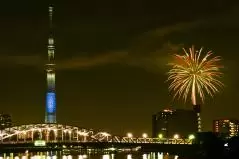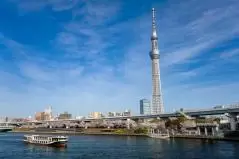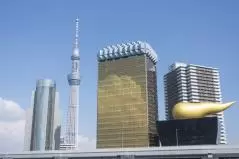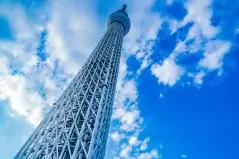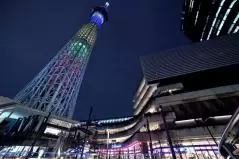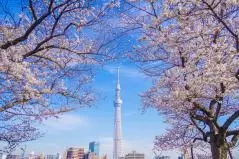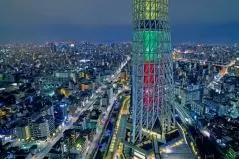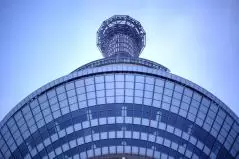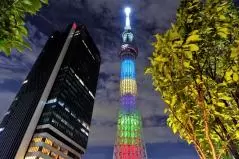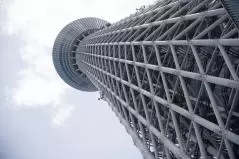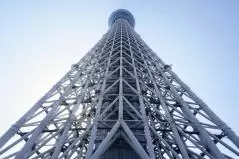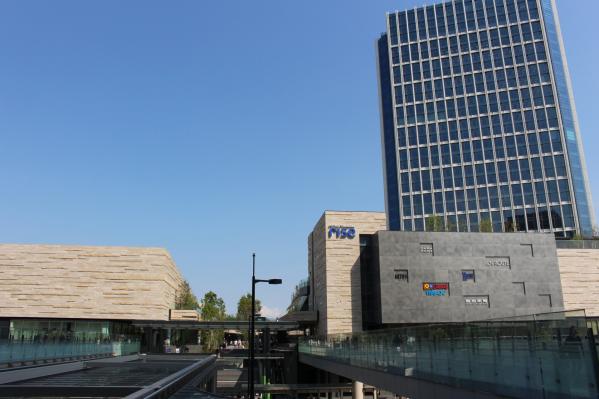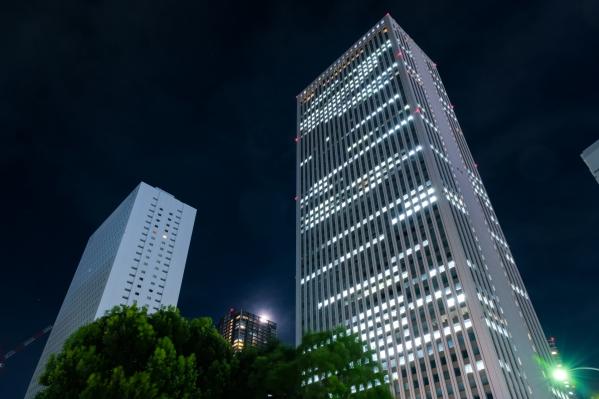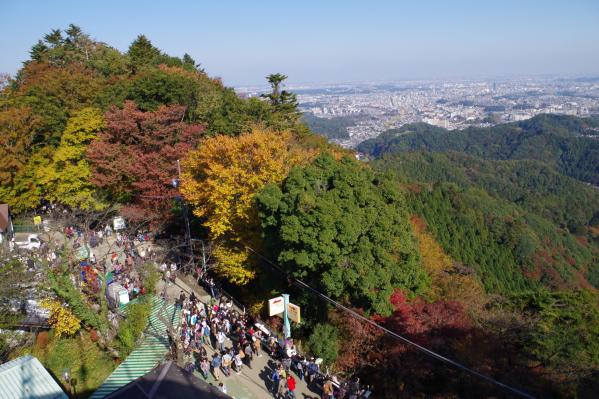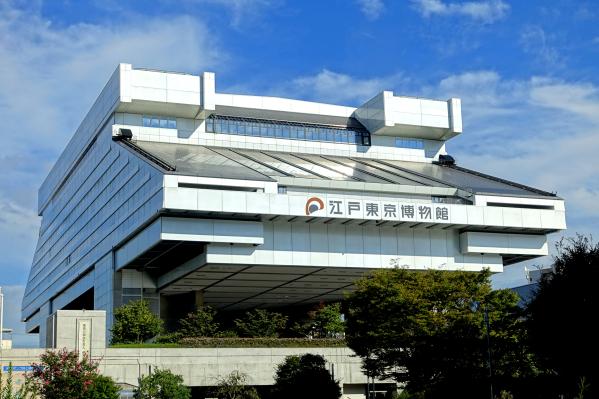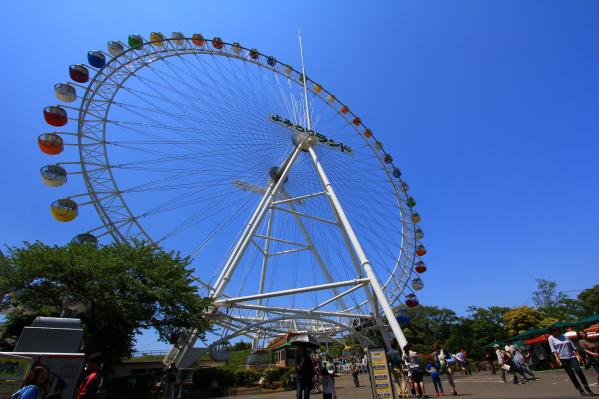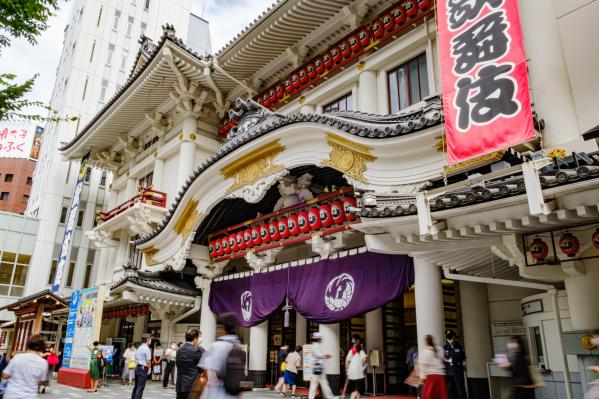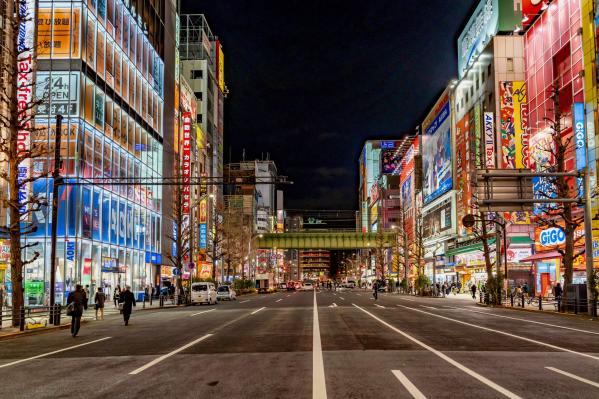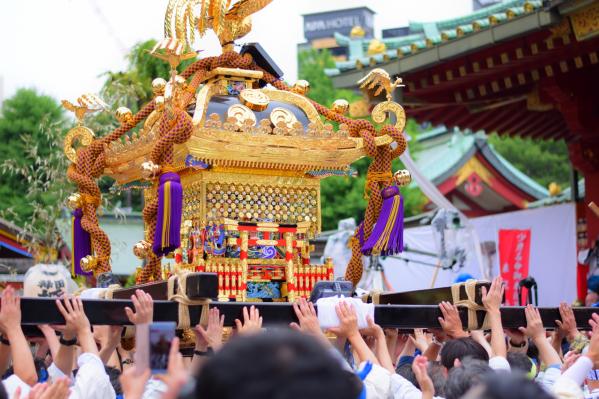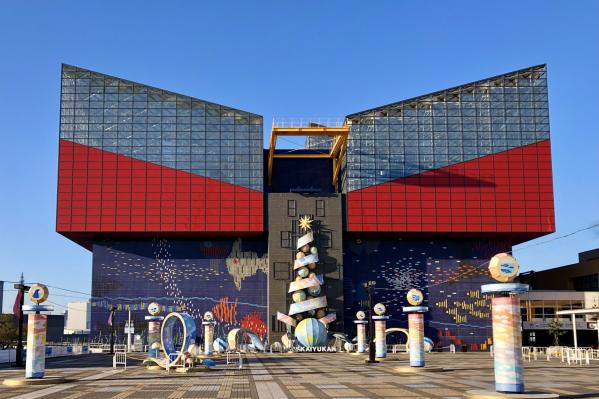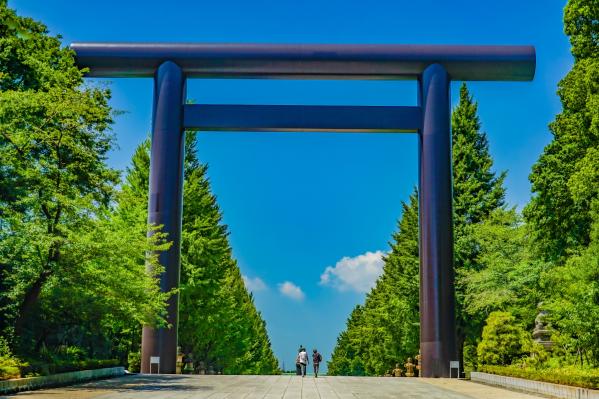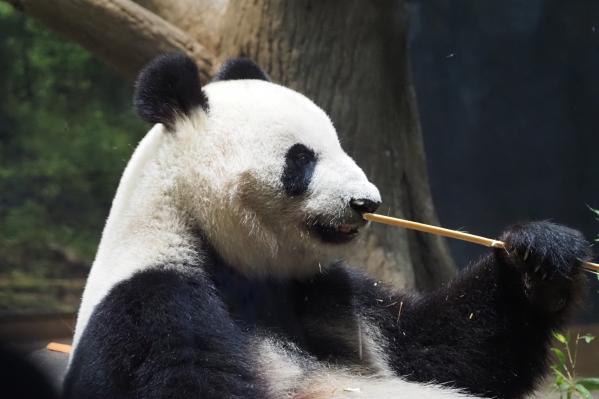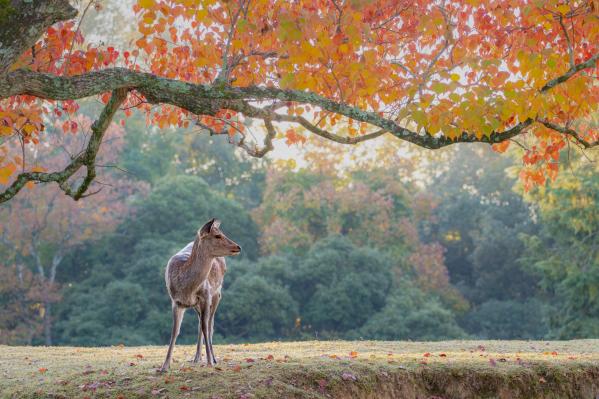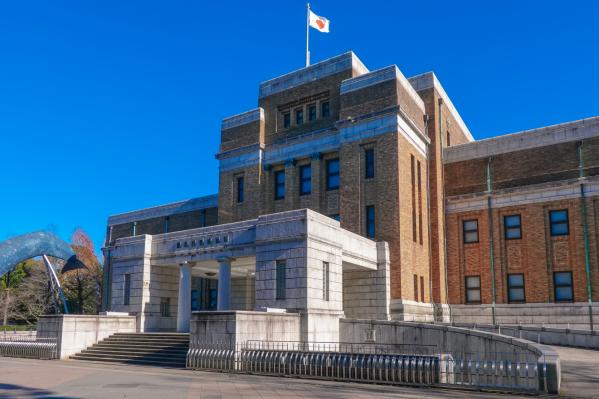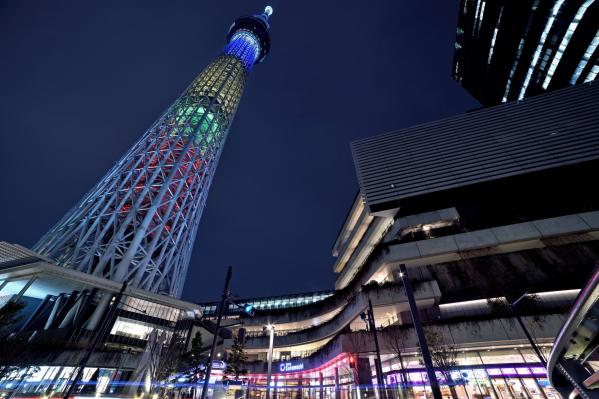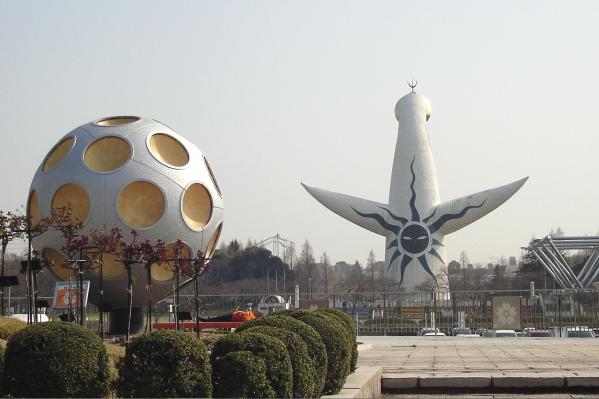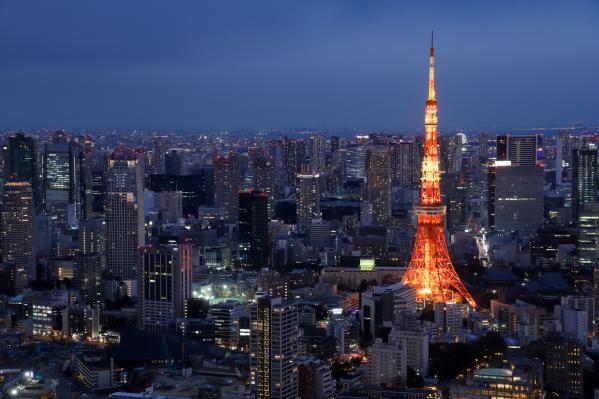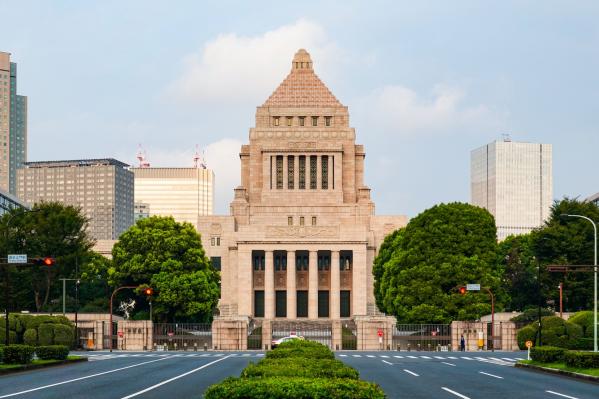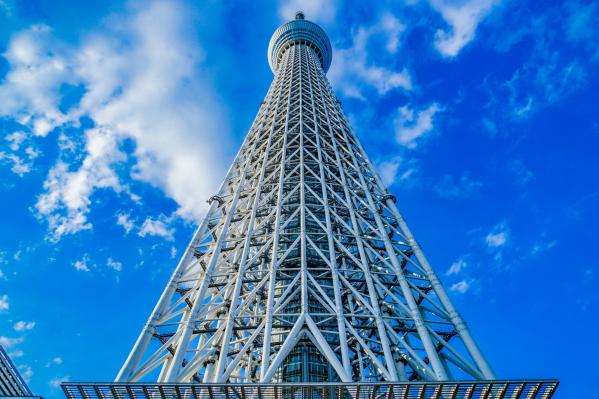Tokyo Skytree®
At its base lies "Tokyo Solamachi®," bustling with over 300 shops and restaurants. Additionally, the Sumida Aquarium and the Konica Minolta Planetarium "Tenku" are also housed here, providing fun all day long. At night, the beautiful illumination inspired by Edo creates a stunning sight, especially during sunset when the Skytree is a must-see.
The nearest stations are Oshiage Station and Tokyo Skytree Station, both of which can be accessed in a short time from major stations in Tokyo. After sightseeing, it is recommended to finish your Tokyo experience with a visit to "SKYTREE CAFE" to enjoy the famous "Skytree Roll."
Tickets are available for purchase in advance as well as on the day of the visit, and buying them online in advance allows for a smoother experience. For those who also want to enjoy the aquarium and planetarium, the "Skytree Enjoy Pack" set ticket is a great deal. With all these attractions condensed into one location, the Skytree can be considered a new standard spot for Tokyo sightseeing.
Basic Information
- Spot Name
- Tokyo Skytree®
- Location
- 1-1-2 Oshiage, Sumida-ku, Tokyo, Japan
- Access
- Directly accessible from Tobu Skytree Line "Tokyo Skytree Station."
Immediately reachable from the underground B3 and A2 exits of Oshiage Station on the Tobu Skytree Line, Tokyo Metro Hanzomon Line, Keisei Line, and Toei Asakusa Line. - Parking
- Parking available.
- Business Hours
- 8:00 AM to 9:00 PM (last admission at 10:00 PM)
- Fees
- Weekdays Adults (18 years and older)
Sky Corridor + Sky Deck Combo Ticket: 3,100 yen
Sky Deck: 2,100 yen - Contact Information
- Phone Number: 0570-55-0634
- Official Website
Map
Detailed Information
▶Basic Philosophy
Tobu Railway and Tobu Tower Skytree will promote this project based on the following basic philosophy, responding to the expectations of the local community, including Sumida Ward.
▸ Contributing to vibrant urban development with the community
Adjacent to popular destinations such as Asakusa, Kinshicho, and Ryogoku, the site capitalizes on its excellent transportation accessibility. Through large-scale mixed-use development centered around the world's highest tourist tower, it aims to create a new hub for interaction, tourism, and industry in the East Tokyo area, revitalizing the local community and contributing to the realization of Tokyo as an international tourism city.
▸ Creating a landscape that transcends time and space
Utilizing the latest technology under Japan's traditional aesthetic sense, designs crafted against the backdrop of the Sumida River, a representative landscape of the Edo period, will merge with the scenic views created by the water system flowing from the nearby Kitajukken River and the charming atmosphere of the downtown area. This will create a unique landscape that transcends time and space, unlike any other area.
▸ Providing safety and security through disaster prevention
Equipped with robust seismic, wind, and fire resistance capabilities, the tower will serve a significant social purpose as an information infrastructure during both normal times and disasters, contributing to the improvement of the area's disaster prevention capabilities. It will help create a city that can withstand earthquakes, fires, and floods, ensuring safety and security for the region.
▶Concept
▸ Tokyo Skytree, a new symbol of the city supported by Japan’s ancient craftsmanship and cutting-edge technology, watches over people gently.
Tokyo Skytree is envisioned as a large tree reaching towards the sky. Its silhouette reflects the "curves" often seen in traditional Japanese architecture, symbolizing the gathering of people beneath a great tree as they connect with each other. The clear sky and lush greenery associated with its name represent the development concept of a "community that is kind to people and the Earth," embodying a vision where an eco-friendly city thrives at the tower's base, attracting people from around the globe and fostering new cultures. The base of the tower is triangular, designed to reduce pressure and the effects of shadows. Moreover, it transforms into a circular shape towards the top, giving diverse expressions depending on the viewing angle.
▸ "Becoming a new symbol of tradition and innovation"
The base of Tokyo Skytree is triangular in form. The number "3," representing the minimum unit needed for stability, ensures a rational shape that considers the surrounding visual impact and shadow effects. This shape also symbolizes the area, flanked by the Sumida River, Arakawa River, and the east-west transportation axis. Furthermore, the silhouette incorporates the "curves" found in traditional Japanese architecture. The graceful curves from the top to the base provide the tower with a dignified presence and elegant atmosphere. If one shifts perspective from the base to the top of the tower, one will notice the basic form transitions from triangular to circular, offering vibrant expressions unlike any other city landmark and rooted in Japan's traditional aesthetic sense, Tokyo Skytree is born through advanced technology. It creates a new landscape that transcends time.
▸ Logo Mark
Designed not only to be the world's tallest, the Tokyo Skytree is also intended to become the best in the scenery, seasons, and human emotions.
Tokiwa Color (Tradition)
Moegi Color (Youth)
Kariya Color (Community)
Koganei Color (Future)
Koubai Color (Brilliance)
Edomurasaki Color (Chic)
Sorairo Color (Ecology)
The vibrant feelings of people gathering around the new tower and the various "things" and "events" it spawns are expressed in colorful dots. All colors used are traditional Japanese colors, filled with the historical and cultural meanings unique to the area where the tower stands. The silhouette of the tower is combined with the design of a tree reaching into the sky, where leaves flourish, flowers bloom, and it bears rich fruit.
▶Specifications
▸ Decision on a height of 634m
Initially, the project considered a height of "about 610m," but had been aiming to create the world's tallest freestanding broadcasting tower since the beginning. Careful consideration regarding structure and other factors was given to achieve this goal. As a result, after thorough discussions amidst ongoing construction of high-rise buildings worldwide, the final decision was made for a height of 634m for the Tokyo Skytree.
Thanks to these efforts, the Tokyo Skytree was certified as the tallest tower in the world by Guinness World Records on November 17, 2011.
▸ Memorable Number
The height of 634m was chosen to create a memorable number for the world’s tallest tower and a regional symbol. The sound "634=Musashi" resonates deeply with Japanese people, evoking the historical "Musashi Province," which covers a large area including parts of Tokyo, Saitama, and Kanagawa. The area where the Tokyo Skytree stands was historically part of Musashi Province. Visitors can look out from the tower towards Musashi, recalling ancient landscapes and the rich historical context of the eastern Edo and Tokyo regions. By using a familiar number, we aim for a height that is easily remembered by the public.
▶Role as a Broadcast Tower
The primary function of the Tokyo Skytree is the transmission of terrestrial digital broadcasting. Digital broadcasting began in the Kanto region in December 2003; however, the influence of the many high-rise buildings in the city center posed challenges for signal transmission. Therefore, the need for a new tower exceeding 600m arose.
Transitioning to a new 600m tower would effectively double the transmission height for terrestrial digital broadcasting, reducing the impact of increasing high-rise buildings and expanding the coverage area of the digital broadcast service "One Seg," which began in April 2006.
Furthermore, the tower's role as a disaster prevention facility is anticipated during times of disaster.
#Townscape/Bikan Historical Quarter # Zoo and botanical gardens, aquariums, farms #Amusement park/Theme park #Commercial facilities/Complex facilities
Tokyo Skytree® Movies
Tokyo Tourist Attractions
View ListFutako Tamagawa Rise Shopping Center
The Futako Tamagawa Rise Shopping Center, directly connected to Futako Tamagawa Station, is a trendy spot featuring sophisticated shops, popular restaurants, and fir...
Ikebukuro Sunshine City
Ikebukuro's landmark "Sunshine City" is one of Japan's largest complex facilities, opened in 1978. It features a variety of attractions including an aquarium, planet...
Mount Takao
Takao Mountain is a 599-meter high mountain located in Hachioji City, Tokyo. It is easily accessible by train from the city center, making it a great spot for casual...
Edo-Tokyo Museum
The Edo-Tokyo Museum in Tokyo is a cultural facility that opened in 1993, dedicated to teaching about the history and culture of Tokyo over approximately 400 years, ...
Yomiuri Land
Yomiuriland offers a variety of attractions, including the thrilling roller coaster "Bandit," a large Ferris wheel, and the new Ferris Wheel "SKY-GO-LAND." In the su...
Kabuki-za Theatre
Kabukiza is renowned as a prestigious theater for Japan's traditional performing art, Kabuki. Established in 1889, it witnessed the "Dan-Kiku Era" when famous actors...
Akihabara Electric Town
Akihabara Electric Town is a globally renowned hub of Japanese pop culture. Affectionately known as "Akiba," the area is bustling with specialty stores for anime, ma...
Kanda Matsuri
The Kanda Matsuri is one of the three great festivals of Edo, held at Kanda Myojin Shrine, and is a grand celebration that conveys the traditions of Tokyo to the pre...
